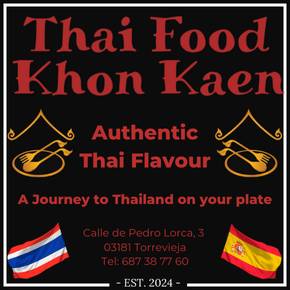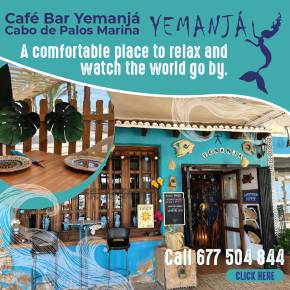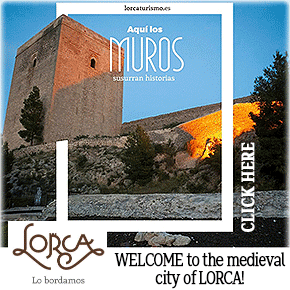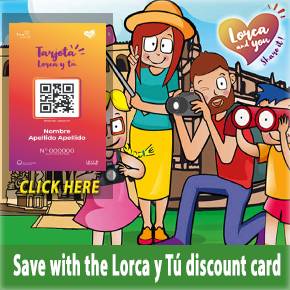article_detail
September 15 to 25 Annual fiestas in Mula
Highlights in Mula include the Romería del Niño de Balate and a concert given by India Martínez
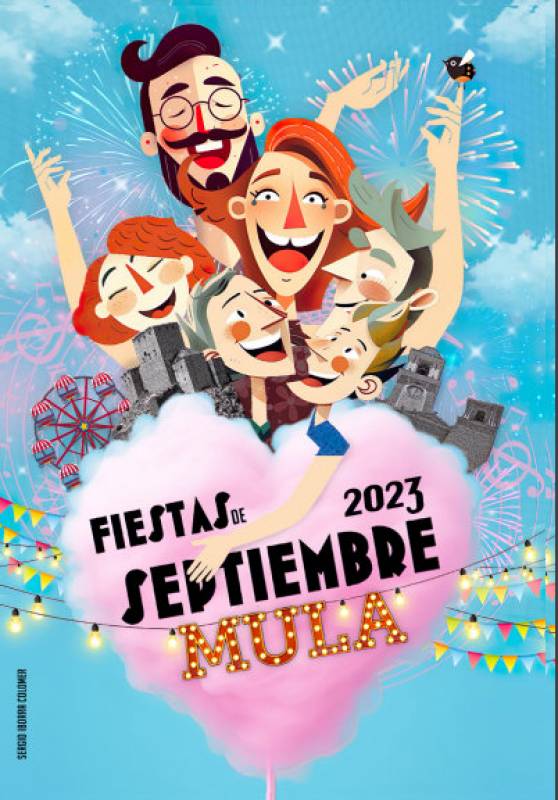 The annual September fiestas in Mula, in the north-west of the Region of Murcia, take place this year from September 15 to 25, the central focus being the Día del Niño de Balate on September 21 and on the Day of the Virgen del Carmen on September 23.
The annual September fiestas in Mula, in the north-west of the Region of Murcia, take place this year from September 15 to 25, the central focus being the Día del Niño de Balate on September 21 and on the Day of the Virgen del Carmen on September 23.
In addition, the Day of San Felipe is celebrated on September 25.
On or close to this date every year there is a “Romería” in which the image of the Niño de Balate is carried back to his rural sanctuary from the town of Mula below, where he has remained since September 8.
The legend of El Niño del Balate dates back to when the area now known as El Niño de Mula was owned by the Botía family, one of whom was Pedro Botía, a shepherd. Both of his parents had died from the plague, and on 21st September 1648 he opened his eyes while praying and saw before him a young boy in the area known as Campo de Albalat, or Campo de Balate.
He asked who the stranger was. "I am Jesus", he replied, "Jesus of Balate, take my cross and follow me", and he disappeared. Immediately, episodes of plague in the area ceased and Pedro became a monk in the nearby monastery of La Encarnación.
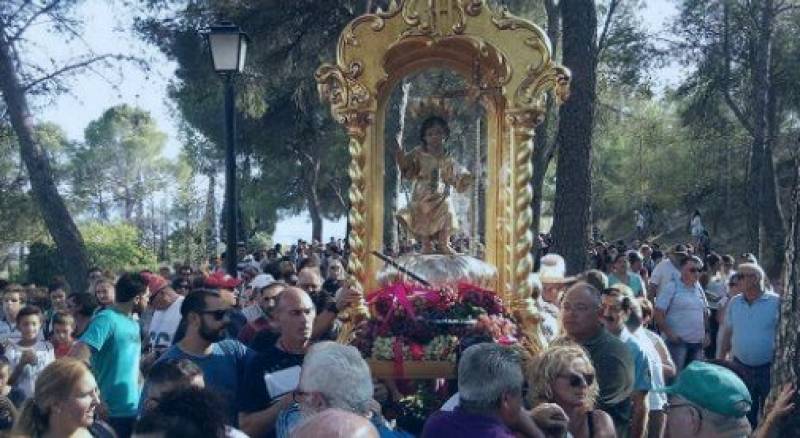 Years later, he had a second vision when he saw a wooden carving of Jesus, and told his story of the apparition, saying the carving was the face of the young boy he had seen.
Years later, he had a second vision when he saw a wooden carving of Jesus, and told his story of the apparition, saying the carving was the face of the young boy he had seen.
The religious celebrations on September 21 consist for most people mostly of the Romería, and the fiestas inevitably include a fairground and numerous concerts, the biggest name performing in 2023 being India Martínez.
The children’s fairground is open from September 19 to 25 in the afternoon and evening (evening only, starting 22.00, on 19th and 20th) at the Pabellón Javi García in the Gran Vía.
Thursday September 14
19.30: Opening of the exhibition “El Tiempo de Crisálida” by Juanjo Martínez Cánovas y Montoya Herrera at the Museo Ciudad de Mula in the Convento San Francisco.
Saturday September 16
A series of guided tours (all in Spanish, further information from the local tourist office):
12.00: Mula in the 19th century.
19.30: The Roman villa of Los Villaricos.
19.30: Churches, heritage and stories, including a visit to see the holy relic of the Santa Espina.
18.30: Grand Prix, It’s a Knockout style fun and games in the Plaza de Toros, admission 12 euros (children 7 euros).
21.00: Mr People music festival at the Recinto Mula Deportiva José Soriano “Chacón”, admission 6 euros.
22.00: 39th annual folk music and dance festival in the Parque Cristóbal Gabarrón.
Sunday September 17
10.00: Motorbikers festival in the Parque Cristóbal Gabarrón.
10.30: Guided tour of the monumental trees of Mula, further information from the tourist office.
Tuesday September 19
20.30: Opening of the fairground with music and fireworks.
21.30: Luis Muñoz Sinfónico and the Agrupación Musical Mula pay tribute to Camilo Sexto and Raphael.
Wednesday September 20
17.30 until late: DJ music in the Parque Cristóbal Gabarrón.
19.30: Religious procession in the streets, ending at the Monasterio de la Encarnación.
22.00: Folk music festival at the Recinto Mula Deportiva José Soriano “Chacón”.
Midnight: Mula prepares for the religious celebrations of the following day, with the church remaining open all night.
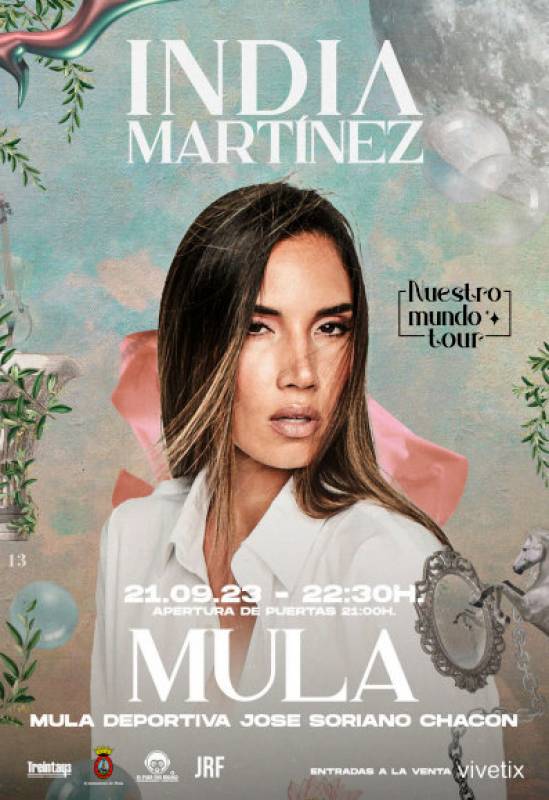 Thursday September 21
Thursday September 21
17.30: Live music from indie band The Tracks in the Parque Cristóbal Gabarrón, followed by DJ Salva Roda at 20.00.
19.30: Religious procession in the streets, ending at the Monasterio de la Encarnación.
23.30: Live music from La Noche de la Romería in the Parque Cristóbal Gabarrón.
22.30: The widely admired flamenco and pop singer India Martínez in concert at the Recinto Mula Deportiva José Soriano “Chacón”. Admission 25 euros in advance, 30 euros at the gate.
Friday September 22
8.30: The Romería begins at the Real Monasterio de la Encarnación as a large crowd accompanies El Niño back to El Balate.
15.30: The day’s music begins in the Parque Cristóbal Gabarrón, featuring Gacebo DJ at 15.30, David Andreu at 18.30 and others until the early hours of the morning.
22.30: Live music at the Recinto Mula Deportiva José Soriano “Chacón” from Medina Azahara, Miguel Campillo and Muerdo. Admission 18 euros in advance, 22 euros at the gate.
Saturday September 23
9.00: Wake-up call from the local music society.
19.30: Bullfighting in the Plaza de Toros.
17.30: More music in the Parque Cristóbal Gabarrón from Siempre Pa’lante and Sensación.
20.30: Religious procession in the streets.
23.00: Music from Nyno Vargas, Cano, Big Lois and DJ Jaro at the Recinto Mula Deportiva José Soriano “Chacón”, admission 18 euros in advance, 22 euros at the gate.
23.30: Lo Mejor del Último, tribute to El Último de la Fila in the Parque Cristóbal Gabarrón.
23.30: Firework display over Mula.
Sunday September 24
10.00: Classic motor vehicle rally in the Parque Cristóbal Gabarrón.
11.00: Traditional flamenco entertainment and “rociera” party in the Parque Cristóbal Gabarrón.
23.00: Music, Xperiencia Remember in the Parque Cristóbal Gabarrón.
Monday September 25
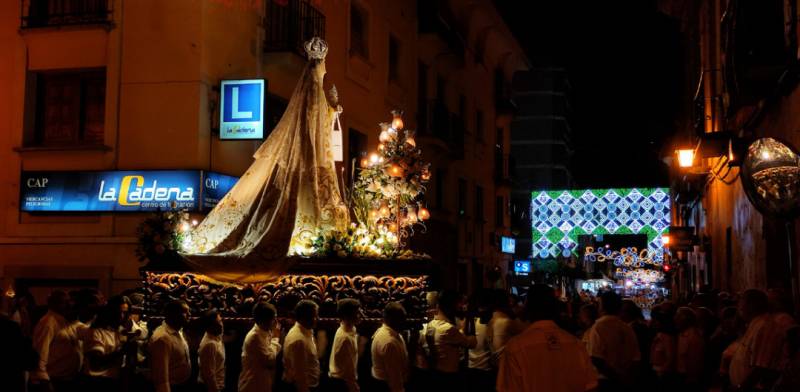 10.30: Inflatables for children in the Parque Cristóbal Gabarrón.
10.30: Inflatables for children in the Parque Cristóbal Gabarrón.
20.30: Religious procession in the streets.
Midnight: A grand firework display marks the end of the 2023 September fiestas in Mula.
For more upcoming events visit the What’s on section of Murcia Today.
Address
Tourist Office Mula, Convento San Francisco,Calle Dona Elvira,30170 Mula,MurciaTel: 968 661 501
Loading
Oficina de Turismo de Mula

The Mula tourist office is located in the Convento de San Francisco in the centre of the town. There is some parking nearby, although those nervous about driving in narrow streets may prefer to park on the opposite side of the main road where there is considerably more space in the modern areas of the town and walk up to the tourist office.
 The convent is right next to the Glorieta, a shaded and characterful corner of the city, an excellent place to stop for a coffee after a walk around the old quarter.
The convent is right next to the Glorieta, a shaded and characterful corner of the city, an excellent place to stop for a coffee after a walk around the old quarter.
Telephone 968 661501
The tourist office is open from Wednesday to Monday between 10am and 2pm and is closed on Tuesdays.
Click for map, Convento de San Francisco, Mula
For more information about visiting Mula, go to the Mula section of Murcia Today.
Mula is the gateway to the north-west of the Region of Murcia, its strategic location giving it importance from early pre-history.
It has a varied landscape, its rocky outcrops providing strategic defensive advantages, its fertile plains and wooded forests agricultural richness, its river and natural springs, life, with important archaeological remains from pre-history (Cueva Antón, Abrigo del Milano), the Argaricculture and above all the Iberian culture.
 El Cigarralejo was an important settlement, to which the Museo El Cigarralejo is dedicated, and yielded vast quantities of Iberian artefacts from the burial ground (or necropolis) and hilltop settlement..The museum houses an unparallelled collection of Iberian grave goods and is a reference point for those interested in the iberian culture.
El Cigarralejo was an important settlement, to which the Museo El Cigarralejo is dedicated, and yielded vast quantities of Iberian artefacts from the burial ground (or necropolis) and hilltop settlement..The museum houses an unparallelled collection of Iberian grave goods and is a reference point for those interested in the iberian culture.
These cultures were followed by the Romans, cultivating olive oil and wine, and the Villaricos Villa is a large-scale example with thermal baths. Then came the Moors, who built the town in its  current position and also left behind the castle of Alcalá, high above the motorway heading towards Caravaca.
current position and also left behind the castle of Alcalá, high above the motorway heading towards Caravaca.
Medieval Mula was dominated by the Fajardos, who became the Marqueses de los Veléz and built the castle of los Veléz, which dominates the Mula skyline above the historic old quarter with its noble palaces. These include the Casa Pintada, now an art museum housing a Foundation dedicated to the internationally renowned artist Cristóbal Gabarrón.
Although the historic old quarter attracts a steady stream of visitors, the town is also known for its traditions, the best-known being its "tamboristas", who drum in the annual Semana Santa (Easter) celebrations. This takes place on the "Noche de las Tambores" in the main town square in front of the parish church of San Miguel.
Mula is also known for its dedication to the Niño de Balate, located in El Niño de Mula. An annual Romería is held in September and there are plenty of other local fiestas.
The main economic activity is agriculture, producing a mixture of dry crops including olives, wheat and grapes, as well as irrigated soft fruit crops, but there is also another important product: energy, as new  technologies have created an important solar power sector in the north-west of Murcia, bringing employment in associated industries.
technologies have created an important solar power sector in the north-west of Murcia, bringing employment in associated industries.
Part of the Regional park of the Sierra Espuña is in Mula, as are the Sierra del Cambrón and Sierra de Ricote, giving it a richly varied landscape with forests, plains, dry karst gullies, rivers and rich agricultural orchards: all of these help to create rural tourism income.
Today Mula is home to around 17,000 inhabitants and is a busy, historic town, with a bustling old quarter and a new town at its foot, providing a complete cultural offering and an annual programme of fiestas and celebrations.
Location
Mula is located in the north-west of the Region of Murcia, forming part of the Comarca del Río Mula. Its northern boundaries coincide with those of Calasparra, Cieza and Ricote; on the east it borders Ricote, Campos del Río, Albudeite and Alcantarilla, to the south Librilla, Alhama de Murcia and Totana, and to the west Bullas, Cehegín and Lorca. In its centre is Pliego, surrounded completely by Mula.
Contact Spanish News Today: Editorial 966 260 896 /
Office 968 018 268


















